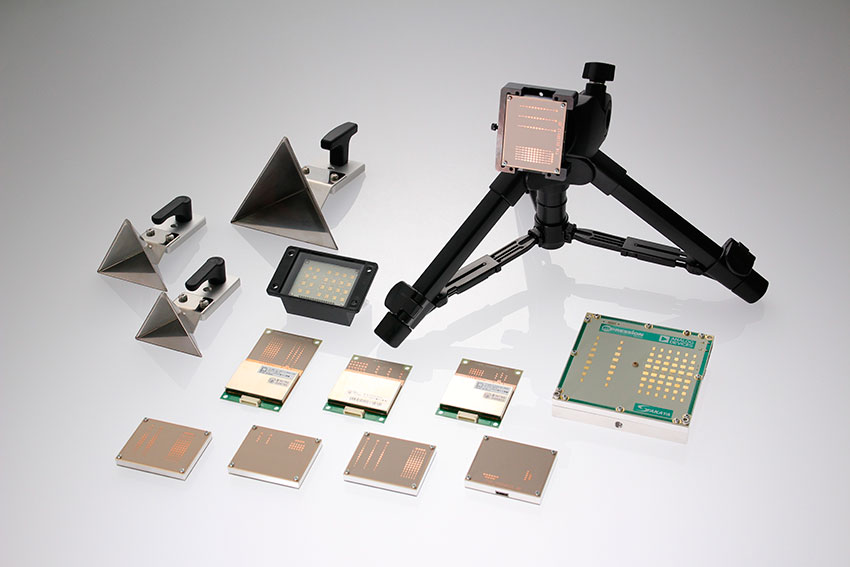

With origins as a joint venture, STEC has become an integrated company for OSAT that can offer a one-stop service.

“Our clients are assured that we can meet their OSAT requirements.”
Futoshi Yunoki, President, S-Takaya Electronics Industry Co., Ltd.
Founded in 1979 as part of a joint venture between Sharp Corporation and Takaya Corporation, S-Takaya Electronics Industry Co., Ltd. (STEC) is a trusted provider of outsourced semiconductor assembly and testing (OSAT), catering to clients in both the Japanese and international markets. An independent company since 2020, STEC creates semiconductor products that are key components of electronic devices we use in our daily lives, including smartphones, televisions, cameras, and video-game consoles, among others.
And STEC also does so much more. “As well as the OSAT of large-scale integration devices and modules which is our main business, our businesses also include the manufacturing and sale of semiconductor manufacturing equipment, in addition to the research and development of radar modules and sales and maintenance of environmental-related products,” president Futoshi Yunoki says.
The comprehensive service STEC provides is one of the firm’s major calling cards. “Our OSAT business handles various types of semiconductor packages – and thanks to our unique technology, we provide a one-stop service,” Mr. Yunoki explains. “The different processes in semiconductor production include wafer testing, dicing, polishing, bonding, encapsulating, molding and final testing. Our advantage is that we offer all of these, and we have testing know-how for wafer testing (front-end process) to final testing (back-end process).”
When it comes to supplying semiconductor manufacturing equipment, meanwhile, STEC’s Vietnamese subsidiary, Saigon STEC, has a major role to play. “We use the Vietnam plant for overseas market distribution,” Mr. Yunoki says. “We listen to the customers' needs and try to develop manufacturing equipment based on that. These pieces of equipment were originally used in our own production sites – and we realized that we could start to sell this know-how to our customers.”
In its R&D division, STEC is developing radar technology for a range of applications. “We’re focusing on millimeter wave radar now because it’s starting to draw attention, especially in the automotive sector – it’s well-known for its use in autonomous driving,” Mr. Yunoki reveals. “However, the millimeter wave radar can be used in so many other scenarios in our lives: for example, it can check the surface level of a river to prevent damage from flooding. And as well as being able to measure distances and angles, it can also detect vital signs, so it can be used for purposes such as healthcare, as it has the ability to monitor a person’s breathing and heart rate.”
Such uses of technology go hand in hand with STEC’s commitment to helping achieve a “safe and secure society” as part of the UN’s Sustainable Development Goals. So, too, does the company’s portfolio of environmental products, which come with a pledge to “leave a beautiful Earth for the future”. Focused on saving, storing and generating energy, they include batteries for collecting solar power, and maintenance services such as solar panel cleaning and coating.
STEC’s pursuit of SDGs is integral to STEC Vision 2030, a company strategy that also includes a drive to create new partnerships. “The Japanese semiconductor sector is shrinking, but we believe there will be a revival of the business in Japan,” Mr. Yunoki says. “When that time comes, we’d like to become one of the main companies in the semiconductor sector.
“The manufacturing and development of sensing technology and power devices that are our core technologies are drawing a lot of attention in the semiconductor industry. We’ll continue to focus on these areas and find partners we can work with. We provide a strong OSAT service, which is the back-end process, but without wafer suppliers, we won’t be able to offer these services, so we’re looking for partners in the front-end process area.
“We’re not limiting ourselves domestically. We’re open to overseas partners. Overseas companies may find us a good production firm to supply their products to end users in the world. Our aim is to provide high-quality, low-cost services that meet the delivery time to end users. We’re looking to create synergies with partners that can realize this goal.”
0 COMMENTS